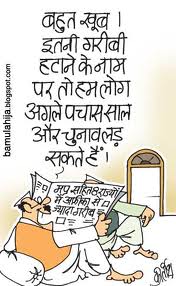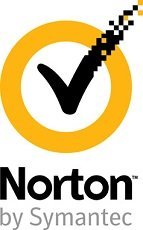
Is India Shining?
Poverty still remains a challenge for the policy makers in Indiadespite high GDP growth of last decade, progress on the implementation of Millennium Development Goals (MDGs) and steady decline in the rate of population growth. Despite the commitment of all political parties to remove poverty and scores of government programs, Indiahas not been able to tackle as effectively as, for example, Chinadid. Therefore, it appears that the policy makers don’t have clear understanding of the multidimensional nature of poverty and have remained oblivion to the real depth and extent of poverty. An attempt will be made here to see poverty in light of various poverty indicators so as to get a realistic picture of poverty in India.
Snapshot of Reality
Of the 1.21 billion people of India, only 38 per cent are illiterate, about 420 million poor live in only eight states, almost 250 million people do not have access to basic medical care, around 350 million do not have access to safe drinking water.
That is not all: A whopping 53 per cent of our children are undernourished and 52 per cent of our primary schools have only one teacher for every two classes.
These numbers are very recent (from July 18, 2011 Times of India): India’s Low HDI Ranking
The Official Poverty Line
 India’s official poverty measure, until recently, has been based solely upon the ability to purchase a minimum recommended daily diet of 2,400 kilocalories (kcal) in rural areas where about 70 percent of people live, and 2,100 kcal in urban areas – it did not consider nutrition but only the satiation of hunger. Rural areas usually have higher kcal requirements due to need of greater physical activity. The poverty definition did not take into account the provisions for shelter (housing), healthcare, education, etc. Essentially, it meant that as long as you consume at least 2100 kilocalories daily you are not poor even if you lived on a footpath or in a shabby slum, can’t see a doctor, and can’t even send children to school!
India’s official poverty measure, until recently, has been based solely upon the ability to purchase a minimum recommended daily diet of 2,400 kilocalories (kcal) in rural areas where about 70 percent of people live, and 2,100 kcal in urban areas – it did not consider nutrition but only the satiation of hunger. Rural areas usually have higher kcal requirements due to need of greater physical activity. The poverty definition did not take into account the provisions for shelter (housing), healthcare, education, etc. Essentially, it meant that as long as you consume at least 2100 kilocalories daily you are not poor even if you lived on a footpath or in a shabby slum, can’t see a doctor, and can’t even send children to school!
Not surprising, if many people considered it a “starvation line” rather than poverty line. Recently the government accepted the Kelkar Committee’s definition of poverty line that is somewhat broader – it also considers health and education. Though critics are still not pleased, it does offer some improvement. Using this definition, the 2010 data reveal that 32.7% people live in poverty as compared to 37% (25.7% urban and 41.8% rural) obtained from 2005 data. It replaces the 27% figure obtained from the older calorie based poverty line and adds about 5 crore more people among the poor. It only meant that the number of “officially poor” increased to 405 million in March 2011 compared with 370 million in 2005.
Other Poverty Lines
The World Bank estimated that 42% people were surviving on less than 1.25 dollars a day in 2005; compares it with Asian Development Bank’s estimate of 55% based on the 1.35 dollar benchmark. These are significantly higher than the new official estimate of 37% of the population in poverty for the same year. In fact, rural poverty of 41.8% closely matches with the World Bank’s estimate of 42%. Incidentally, a 2 dollar a day poverty line makes over 75% Indians poor.
However, regardless of which number is used to define the poverty line, one only gets an idea of the number of poor and learns nothing about the nature of their poverty or suffering.
Composite Poverty Indices
Income based approach to poverty can not tell any thing about other forms of deprivations poor go through. Poverty is basically a denial of a range of material needs such as nutritious food, safe drinking water, shelter, healthcare, education, etc. Therefore, multidimensional poverty measures provide better understanding of the nature of poverty – at local, regional, national, and world level.
Global Hunger Index (GHI)
The Global Hunger Index (GHI) is basically a measure of malnutrition and hunger – two biggest enemies of the poor. It is focused on three measures weighted equally:
Proportion of people who are undernourished
Proportion of children under five who are underweight
Child mortality rate
In the recent Global Hunger Index 2010, Indiais among 29 countries with the highest levels of hunger, stunted children, and poorly fed women. It ranked 67th out of 84 developing countries and was way behind China (9th) and Pakistan (52nd). Bangladesh was right after India at 68th position. India’s performance was adversely affected due to high levels of underweight children resulting from the low nutritional and social status of women in the country. In India, 46% children under five are undernourished compared to just 5% in Pakistan. Even the neighboring Nepal (56th)and Sri Lanka (39th) as well as Sudan andNorth Korea did better thanIndia. Such insight is not possible from pure income based poverty lines.
In 2008 when the GHI was applied to 17 individual states ofIndiacovering over 95% of the population, there was a wide variation between states – the best was Punjab and the worst was Madhya Pradesh. 12 states had “alarming” poverty and 1 (Madhya Pradesh) showed “extremely alarming” level of poverty; none of the states was free from “serious” poverty. You may like to explore:
Understanding Indian Poverty through Global Hunger Index
Human Poverty Index (HPI)
The UN’s Human Poverty Index (HPI) is another widely used poverty indicator. It is calculated differently for developing (HPI-1) and developed (HPI-2) countries and the two are not comparable. It focuses on lack of three basic dimensions of poverty:
Longevity
Knowledge
Standard of living
For the developing countries, the first deprivation relates to survival – the likelihood of death before the age of 40. The second relates to education – those who are excluded from reading and communication (the level of illiteracy). And the third dimension incorporates a measure of standard of living – percentages of people without lack of safe drinking water and undernourished children.
Of the 182 countries ranked in 2009,Indiawas located at the 134 position much behind China at position 92. Afghanistan and Niger occupied the bottom two spots. The country with best HPI were Norway followed by Australia and Iceland at 2 and 3 rank; Japan at 10, US at 13 and UK at 21. Pakistan was ranked somewhat below at 141, if that can be taken as solace. Bhutan and Laos did better than India on this index.
From 2010, HPI has been replaced by a better and more comprehensive poverty measure, the multidimensional poverty index (MPI) which is described below.
Multidimensional Poverty Index (MPI)
In July 2010, the United Nations Development Program (UNDP) and the UKbased Oxford Poverty and Human Development Initiative (OPHI) came up with a new measure of poverty, called Multidimensional Poverty Index (MPI), which will replace the HPI. The new measure attempts to go beyond income poverty and gives a broader understanding of different types of deprivation the poor may face.
It is more comprehensive than the HPI and incorporates ten weighted indicators that measure education, health and standard of living. The Indicators used are:
Education: Years of schooling and child enrollment (education) (each with 1/6 weight-age);
Health: Child mortality and nutrition (each with 1/6 weight-age);
Standard of Living: Electricity, flooring, drinking water, sanitation, cooking fuel and assets (each with 1/18 weight-age).
The MPI reflects both the extent of poverty and its intensity and throws up some new light on Indian poverty. A person is poor in this index if he is deprived on at least 30% weighted indicators. By this definition, 55% of India is poor, twice the official figure of 27% (which now stands revised to 32.7% for 2010 data and new poverty line definition), and almost 20% of Indians are deprived on 6 of the 10 indicators.
Comparing MPI ranks of individual Indian states with other countries, MPI suggests that there are more poor people (421 million) in the eight Indian states of Bihar, Chhattisgarh, Jharkhand, Madhya Pradesh, Orissa, Rajasthan, Uttar Pradesh, and West Bengal than in the 26 poorest African countries combined (410 million).
MPI was also calculated for individual states of India and compared with MPIs of the 103 other developing countries. It revealed that the magnitude of regional differences within India almost range from that of a reasonably well off Indonesiato that of a desperately poor Somalia.
State with the best MPI is Kerala that resembles Paraguay and Philippines, next best is Goa, which is close to Indonesia, Punjab’s MPI is similar to that of the central American nation of Guatemala while HP is close to the north African Morocco, and TN is akin to Ghana, a sub-Saharan nation. Amongst the low performers, MPI of MP is similar to DR Congo and Rwanda, while Bihar and Jharkhand have the worst MPI and compare with Somalia.
In also points to the fact that world wide South Asia has the highest levels of poverty: 51% percent of the population of Pakistan is poor, 58% in Bangladesh, and 65% in Nepal; not very different from 55% in India.
This multidimensional index has already been adapted for official use in Mexico; Chile and Colombia are considering it. Hope Indian policy planners will begin to think on similar lines soon.
Conclusion
The composite indices are able to better capture the nature, extent and depth of poverty compared with the income or single dimensional indicators. Hence, their use should be encouraged to utilize their diagnostic capability in the policy and decision making. Looking at all the above, it appears fair to say that about one-third to half of Indian population can be safely labeled “poor” who are severely deprived of even the most basic necessities of life.
References








